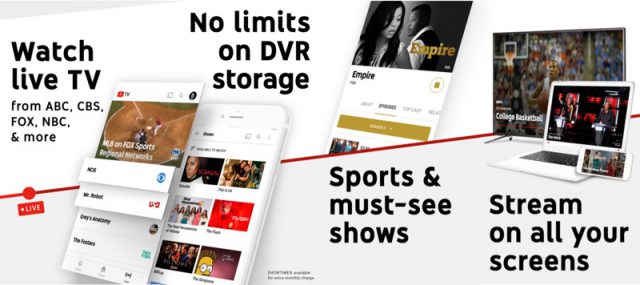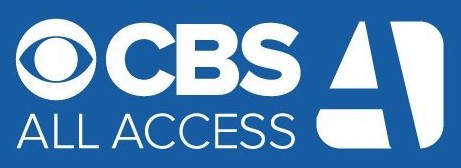 YouTube TV customers attracted by unlimited storage DVR service are now discovering their recorded shows have been temporarily replaced with an on-demand version loaded with unskippable advertising.
YouTube TV customers attracted by unlimited storage DVR service are now discovering their recorded shows have been temporarily replaced with an on-demand version loaded with unskippable advertising.
In late April, YouTube TV dramatically increased the number of shows that cannot be viewed using DVR service. Instead, viewers are pointed to the on-demand version instead, even when a customer records the show using YouTube’s unlimited storage DVR service. Some customers who pay $40 a month for YouTube TV don’t appreciate what they consider a “bait and switch” DVR that raids their library of recorded shows and puts them off-limits in favor of an alternative version littered with ads one cannot skip.
Customers may not have noticed the gradual increase in the number of ads-included, on-demand shows until recently when YouTube TV started restricting the option of watching an ad-skippable DVR recording instead. Now it is the on-demand (VoD) version or nothing in many cases, at least for the first month or so after a show airs.
“I never had trouble watching DVR versions of programs from NBC, USA, FX, FOX, etc. several days — if not weeks — after recording them. Even if there was a VoD version available,” noted Daw Johnson. “As of last week, the service has completely changed. Roughly 16 hours after the program airs live, you completely lose access to recordings on shows from any of those networks. You’re 100% forced to watch the VoD version (with ads).”

How YouTube TV is marketed.
Each network seems to handle advertising differently. CBS is notorious for loading as many as 20 ads per hour, while some shows on ABC don’t include any ads at all. Some ads are 15 seconds long, others — especially pushing prescription drugs, can run much longer.
Some customers feel YouTube TV has misled them about its DVR service, noting it was sold as an unlimited service:
You can record as many programs as you want at the same time, without ever running out of storage space. We’ll even keep each recording for 9 months. Stream from your library anywhere in the U.S.
 But in reality, because of YouTube’s own desire to increase advertising revenue and thanks to agreements with certain programmers, DVR service is becoming more restricted on current shows, and a growing number of older titles airing on cable networks are likely to see mandatory ads creep in as well as YouTube starts selling ad time itself.
But in reality, because of YouTube’s own desire to increase advertising revenue and thanks to agreements with certain programmers, DVR service is becoming more restricted on current shows, and a growing number of older titles airing on cable networks are likely to see mandatory ads creep in as well as YouTube starts selling ad time itself.
“Many networks provide recent episodes of shows, movies, and more on demand. If you’ve recorded a program that’s available on demand at the time you’re watching, in some cases the on demand version will be played back instead of your recording. You typically cannot fast-forward through video on demand ads,” the company explained.
This week, YouTube unveiled a brand new effort to integrate the Google video ads platform into the YouTube TV experience, opening up plenty of new advertising opportunities for companies that want to target YouTube TV customers and be assured viewers cannot fast forward past their ads.

Now Google’s advertisers can target video ads at YouTube TV customers.
“Content from some cable networks in the U.S. will be part of Google Preferred lineups so that brands can continue to engage their audience across all platforms,” said Debbie Weinstein, managing director of YouTube/Video Global Solutions. “This means advertisers will be able to get both the most popular YouTube content and traditional TV content in a single campaign – plus, we’ll dynamically insert these ads, giving advertisers the ability to show relevant ads to the right audiences, rather than just showing everyone the same ad as they might on traditional TV.”
That is likely to mean an exponential increase in GEICO ads.
None of this should be a surprise, if subscribers reviewed the terms and conditions of service when they signed up. In March, 2017, we warned would-be customers the service would insert forced advertising into the DVR experience. YouTube TV isn’t likely to be the only streaming service that will start pushing mandatory advertising into DVR recordings. TV executives want to establish a precedent for forced advertising on the cord-cutting streaming marketplace.
“While it isn’t possible to put the DVR genie back in the bottle for traditional cable customers, TV networks are hopeful they can train viewers to expect ads at least in on-demand, current-season shows they stream,” reported the Wall Street Journal in 2017.
 Hulu could soon be in the hands of Disney, as a high stakes game of asset trading overseas could have a dramatic impact on the streaming service.
Hulu could soon be in the hands of Disney, as a high stakes game of asset trading overseas could have a dramatic impact on the streaming service.

 Subscribe
Subscribe Fierce Cable
Fierce Cable  YouTube TV customers attracted by unlimited storage DVR service are now discovering their recorded shows have been temporarily replaced with an on-demand version loaded with unskippable advertising.
YouTube TV customers attracted by unlimited storage DVR service are now discovering their recorded shows have been temporarily replaced with an on-demand version loaded with unskippable advertising.
 But in reality, because of YouTube’s own desire to increase advertising revenue and thanks to agreements with certain programmers, DVR service is becoming more restricted on current shows, and a growing number of older titles airing on cable networks are likely to see mandatory ads creep in as well as YouTube starts selling ad time itself.
But in reality, because of YouTube’s own desire to increase advertising revenue and thanks to agreements with certain programmers, DVR service is becoming more restricted on current shows, and a growing number of older titles airing on cable networks are likely to see mandatory ads creep in as well as YouTube starts selling ad time itself.

